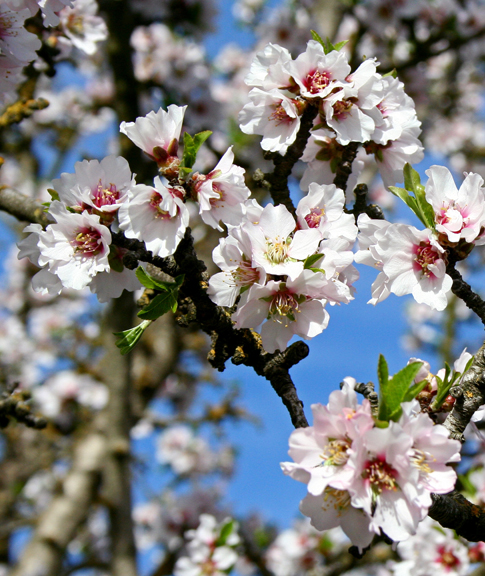By Amy Graff
California is in the midst of a four-year drought, the worst in 106 years. The Sierra snowpack is dwindling; lakes and reservoirs are reaching historic lows. The lush green lawns of the suburbs are turning brown and parched. Vast swaths of the Central Valley farmland are sitting idle. Mandatory water cutbacks are now in place for both residential consumers and agricultural users.
What does the future hold for the drought-gripped Golden State? What can we do to solve the problem?
The answers to these questions are spreading across the Internet like a wildfire blazing through the water-starved Santa Ana brush. Some of them are true, others exaggerated, and many downright wrong. No, you won’t be paying $20 for a little carton of California-grown strawberries this summer, even at that ubiquitous grocery store that loves to suck up whole paychecks with beautiful produce.
To help you determine fact from fiction, we checked in with Jay Lund, a University of California at Davis professor in civil and environmental engineering. Lund is on the forefront of drought research, predicting our state’s future and determining the best plans of action. He helped SFGate debunk a few of the most common California drought myths and the good news is that he says, “Don’t panic.”
“Water is going to get tighter,” Lund says. “We’re going to be reminded that we live in a dry state. But we can make some changes to better manage our water and we have a lot of ground water to help us out.”
The Myths:
1) Farmers suck up the majority of the state’s water. Of the water available, roughly 40 percent goes to farmers, 10 percent to urban uses and 50 percent environmental uses such as rivers, lakes, wetlands and refuges. There’s no true villain in California water policy. All sectors need to better use and manage water.
2) Treated sewage water is undrinkable. “Toilet to tap” water can be cleaner than bottled water, some experts say, and many Californians are already drinking it. Orange County has an indirect potable reuse system to purify human wastewater. More than 200 wastewater treatment plants dump effluent into the Colorado River, a primary source of drinking water for Southern California.
3) Food prices will go through the roof. When farmers face higher prices due to drought conditions, retail prices rise only slightly. A 10 percent increase for the farmer, usually means about a 2 to 3 percent increase for the consumer. Four years into the drought, many farmers aren’t even facing higher prices as they’re dealing with the conditions by pumping ground waters and shifting crops, most of which are buffered by being part of a global market.
4) Agriculture hasn’t faced water supply cuts. Last year, residential consumers made voluntary cuts while many farmers with junior water rights saw 100 percent reductions. This year residential consumers face mandatory 25 percent cutbacks while agricultural users are being cut back far more.
5) Shorter showers will save us. Water conservation is important, but its effectiveness is often overstated. Consumers can make the biggest impact by not watering their lawns.
6) We have an endless supply of groundwater that we can depend on. The water tables are dropping so the supply is not infinite but there’s enough to get us through a few more years of drought. Right now, some 70 to 80 percent of lost surface water in agriculture is being made up by pumping ground water. The key is to adopt better methods for managing this crucial water supply.
7) Building more desalination plants will fix the problem. Only if you want to spend a lot of money. In the midst of a 12-year drought in Australia, many big cities built big expensive plants that are now sitting idle while taxpayers still pay them off. Residential customers typically pay $900 to $1,000 per acre foot for water while they’d pay $2,000 to $3,000 for water from a desalination plant.
8) An El Nino year will end the drought. We need several years of heavy rain, not just one, to replenish surface supplies. This weather phenomenon that brings a warm band of water to the Pacific Ocean doesn’t always lead to storms on the West Coast but when it does, our past records show that it doesn’t put an automatic end to drought conditions.
9) California knows how to manage droughts. “We do and we don’t,” says Jay Lund, a University of California at Davis professor in civil and environmental engineering. “Every drought is different as California is a dynamic place. You never step into the same drought twice. We still have a lot to learn.”
10) Environmental regulation is causing the water shortages. Yes, the environment uses the largest share of California’s water with 50 percent going to everything from wetlands to Delta outflow. But it’s important to know that a lot of the water that’s allocated to the environment is reused by humans for drinking water and irrigation.








